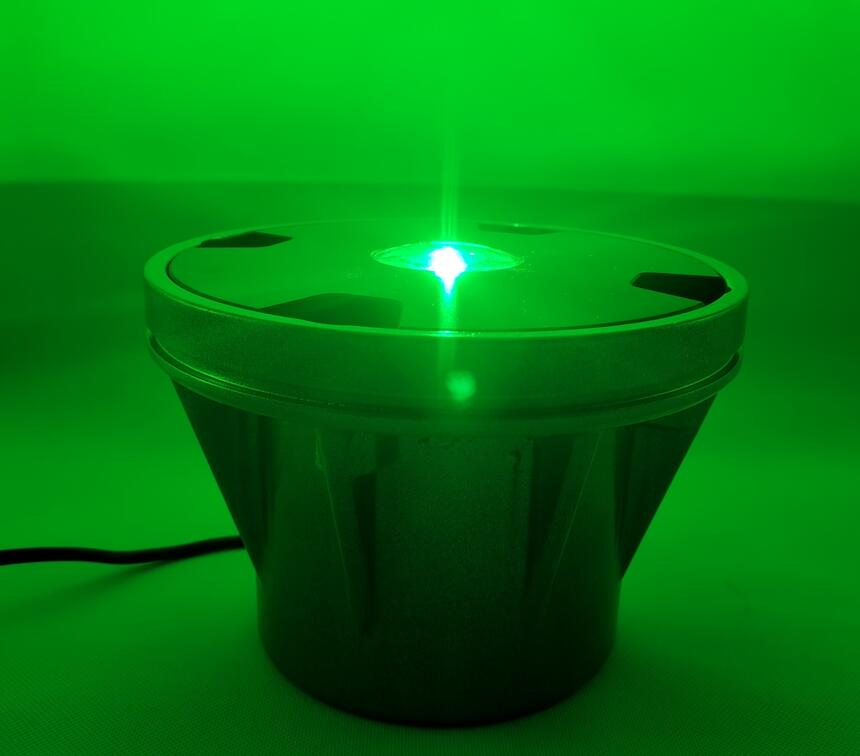Helipad light design is a critical component of aviation safety, ensuring clear guidance for pilots during landing and takeoff. Proper illumination is essential for both daytime and nighttime operations, as well as in adverse weather conditions. Effective helipad lighting improves visibility, minimizes risks, and enhances overall efficiency in various environments, from hospitals and skyscrapers to offshore platforms and military bases.
Key Elements of Helipad Light Design
1. Perimeter Lighting
Perimeter lights define the helipad's boundary, preventing pilot confusion and ensuring a clear landing zone. These lights are typically green or white and are installed at uniform intervals to create a visible outline from all approach angles. Their durability and resistance to harsh weather conditions are crucial for long-term functionality.
2. Approach and Guidance Lighting
Approach lighting systems provide pilots with essential visual cues during landing. These lights, placed along the approach path, help pilots align properly with the helipad. In high-traffic or critical zones, a combination of steady and flashing lights may be used to improve recognition from a distance.

3. Floodlighting
Floodlights enhance the overall visibility of the helipad, ensuring the surface markings and obstacles are clearly distinguishable. These lights must be positioned carefully to avoid glare that could hinder a pilot’s vision. Advanced designs use directional and shielded lights to provide optimal illumination while reducing unnecessary light pollution.
4. Wind Direction Indicators and Obstruction Lights
A well-lit wind sock or illuminated wind direction indicator is an integral part of helipad light design. It provides real-time wind information to pilots, assisting in a safe landing approach. Additionally, obstruction lights mark nearby hazards such as buildings, antennas, or trees, preventing potential collisions.
| Helipad Light Design |
| Helipad Lights Design |
5. Touchdown and Positioning Lighting
Touchdown and lift-off (TLOF) lighting ensures that pilots can accurately gauge the exact landing area. These lights are typically inset or flush-mounted, preventing interference with the landing gear. Bright, uniform lighting helps improve precision in both day and night operations.
Challenges in Helipad Light Design
1. Environmental and Weather Considerations
Helipad lights must function effectively in various environmental conditions, including rain, fog, snow, and extreme temperatures. High-quality, weather-resistant materials and advanced optics help maintain performance in such challenging settings.
2. Power Supply and Energy Efficiency
Helipads in remote areas, such as offshore platforms or mountainous regions, require reliable power sources for uninterrupted lighting. Solar-powered and LED-based lighting systems offer energy-efficient and sustainable alternatives, reducing maintenance costs while ensuring consistent illumination.
3. Compliance with Aviation Standards
Regulatory bodies such as the ICAO (International Civil Aviation Organization) and FAA (Federal Aviation Administration) establish strict guidelines for helipad light design. Compliance with these standards ensures uniformity and safety across different locations, preventing operational inconsistencies.
Innovations in Helipad Light Design
1. Smart and Adaptive Lighting Systems
Advancements in technology have led to the development of smart lighting systems that adjust brightness based on environmental conditions. Adaptive lighting enhances visibility while reducing energy consumption, making it an attractive solution for modern helipads.
2. Wireless and Remote-Controlled Systems
Wireless lighting systems eliminate the need for extensive wiring, simplifying installation and maintenance. Remote-controlled helipad lights allow operators to adjust settings dynamically, improving flexibility and efficiency in emergency or high-traffic scenarios.
3. Integration with GPS and Automated Navigation
Future helipad light design trends include integration with GPS-based navigation systems. Automated lighting adjustments based on aircraft approach data can further enhance safety and precision, reducing the margin for human error.
Helipad light design is a crucial aspect of aviation infrastructure, ensuring safe and efficient air operations. By incorporating perimeter lighting, approach guidance, floodlights, and obstruction markers, a well-designed system enhances visibility and operational safety. Overcoming challenges such as environmental resistance, power efficiency, and regulatory compliance requires ongoing innovation. As technology evolves, advancements in adaptive, wireless, and GPS-integrated lighting will further revolutionize helipad illumination, setting new standards for safety and efficiency in the aviation industry.